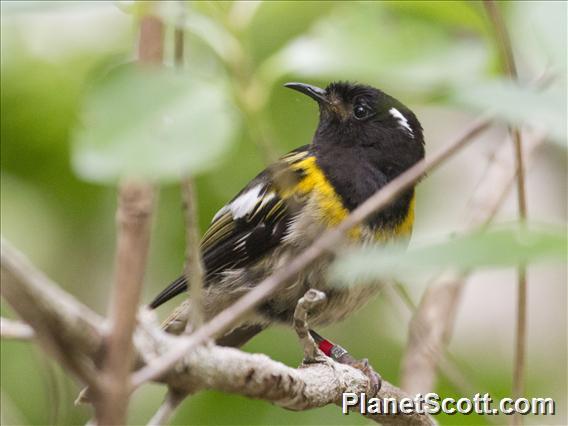Stitchbird (Notiomystis cincta)

Stitchbird (Notiomystis cincta)
×


Stitchbird (Notiomystis cincta)
About Stitchbird (Notiomystis cincta)
- Kingdom: Animals
- Phylum: Chordates
- Class: Birds
- Order: Perching Birds
- Family: Honeyeaters
The stitchbird or hihi is a honeyeater-like bird endemic to the North Island and adjacent offshore islands of New Zealand. Its evolutionary relationships have long puzzled ornithologists, but it is now classed as the only member of its own family, the Notiomystidae. It is rare, being extirpated everywhere except Little Barrier Island, but has been reintroduced to two other island sanctuaries and four locations on the North Island mainland. Current population estimations for mature individuals in the wild are 2,500–3,400.
Source: Wikipedia
Lifelists
Trips
Visits
-
2012-01-26
Tiri Tiri Matangi, New Zealand

